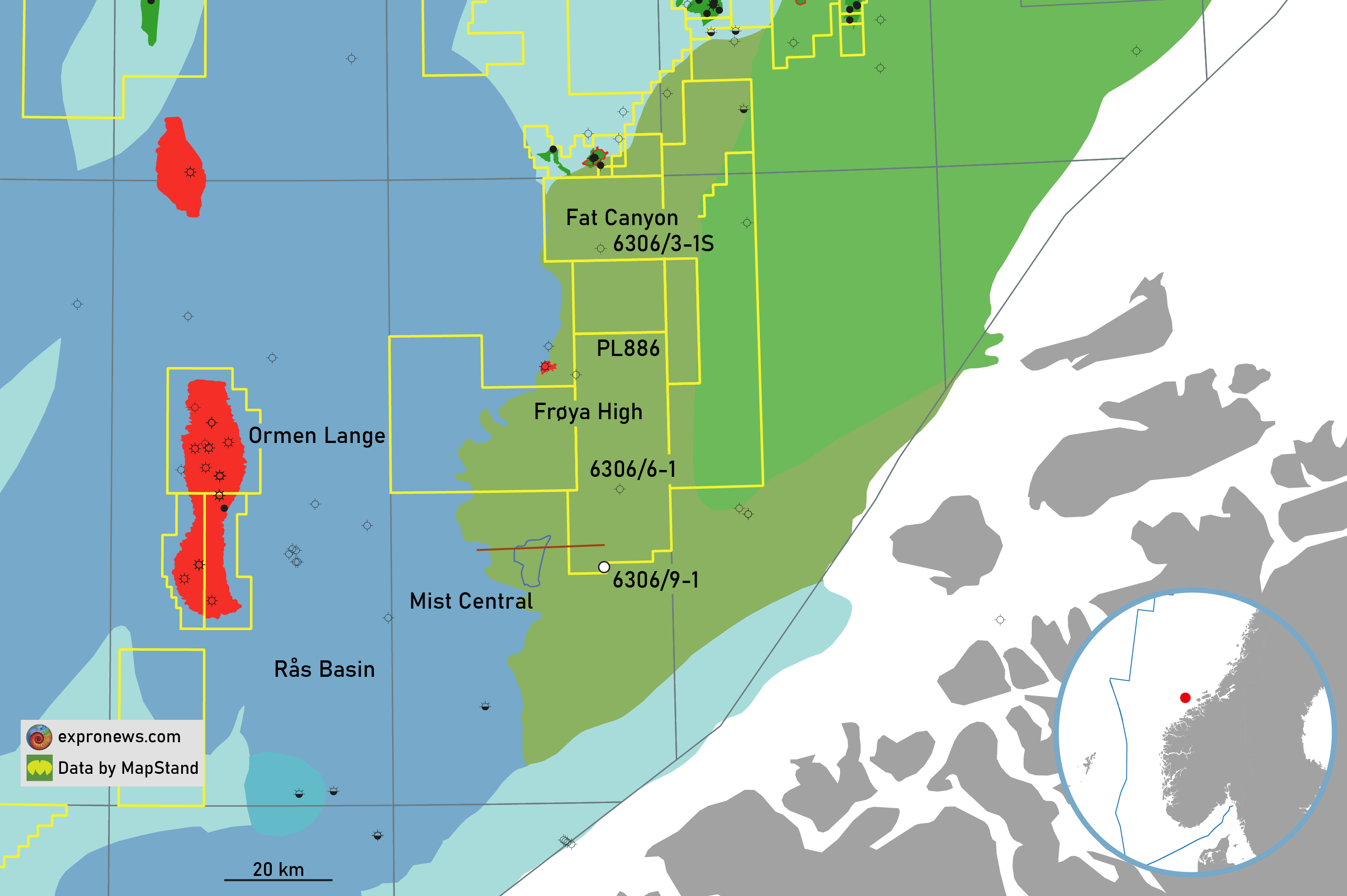A week ago, Lundin Energy and partners Spirit (20%; soon to be Sval Energy) and Petoro (20%) spudded well 6306/9-1 in PL886, following a delay of more than a year. Based on the geological setting of the Upper Jurassic prospect it looks as if a Johan Sverdrup equivalent is being tested by this well. However, there seem to be a few differences too, which may lower the chances of finding commercial amounts of hydrocarbons in this area.
The main similarity between the Melstein prospect and the Johan Sverdrup field is the setting on the top of a basement high. In the case of Melstein, this is the Frøya High. Looking at a Top Basement map of the area where the well is currently being drilled (see below), it can be seen that the top basement in the vicinity of the well will be at around 1000 m, with the overlying clastic Upper Jurassic wedge being slightly shallower than that. This also corresponds to the prognosed TD depth of the 6306/9-1 well of 1170 m.

The Frøya High very recently featured in the exploration arena already through the drilling and completion of the 6306/3-1S well targeting the Fat Canyon prospect in the northern part of the High. The well, which tested an Upper Jurassic to Lower Cretaceous sandstone succession, was anticipated to encounter reservoir quality sands but only proved heavily cemented reservoirs with no traces of hydrocarbons observed.
Depth and tilt
So, the overall structural setting is similar to the Johan Sverdrup field, the depth at which the reservoir is anticipated is not. With the Johan Sverdrup reservoirs being at around 1,900 m, the Melstein prospect is significantly shallower and therefore opens up the risk of biodegradation and high viscosities. Another difference, at least when looking at the seismic section below, is that the top of the Frøya High seems to display more of a tilt than the Utsira High, which may require additional sealing mechanisms at Melstein in order to trap hydrocarbons migrating from the west.

Well test
In a document submitted to the Environment Agency, Lundin explicitly states that it is intending to carry out a formation test if the results are promising. It adds that the dynamic data generated through formation tests on Johan Sverdrup and Edvard Grieg were instrumental in deciding the appraisal and development strategy. It is interesting to read this, and whilst it does make sense to carry out a test, it is something that doesn’t happen very often any more in exploration wells these days.
Basement prospect nearby
Another interesting aspect to this area is the fact that Spirit Energy until late 2020 owned licence PL998 to the immediate west of PL886. The main prospect identified by the company and its partners in this licence is the Mist Central closure as identified on the map above. An anticipated fractured basement reservoir, it draws a parallel to Spirit’s involvement in the fractured basement play West of Shetland in UK waters, which at the time of the PL998 licence application must still have looked promising.
HENK KOMBRINK





